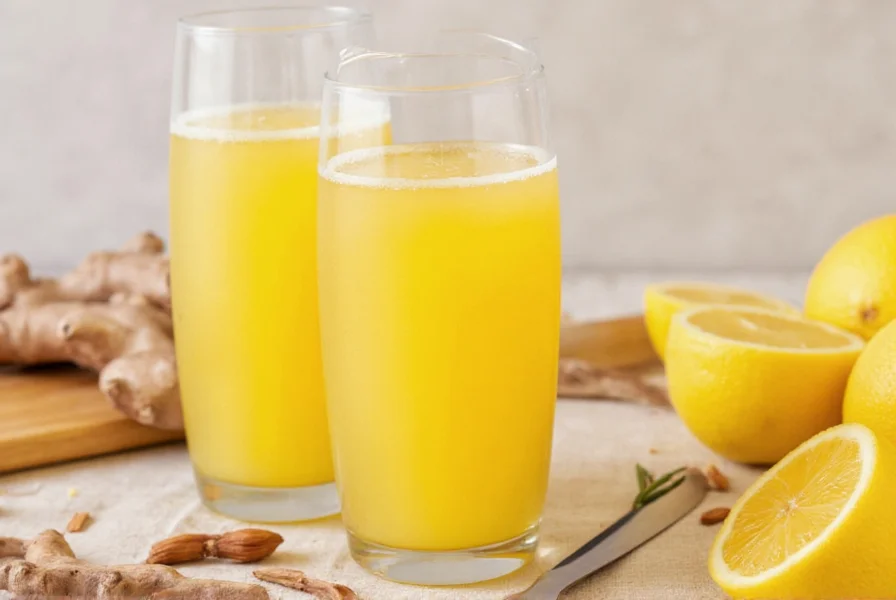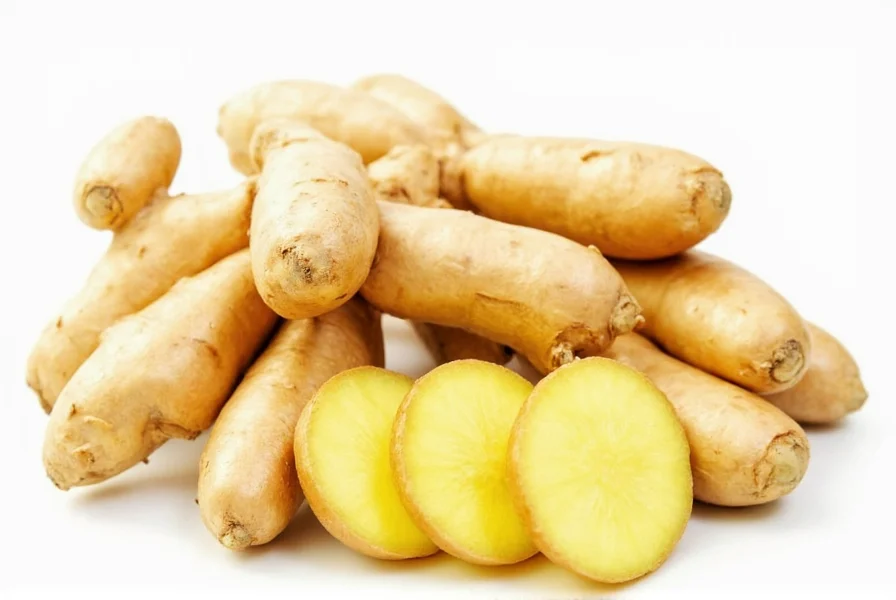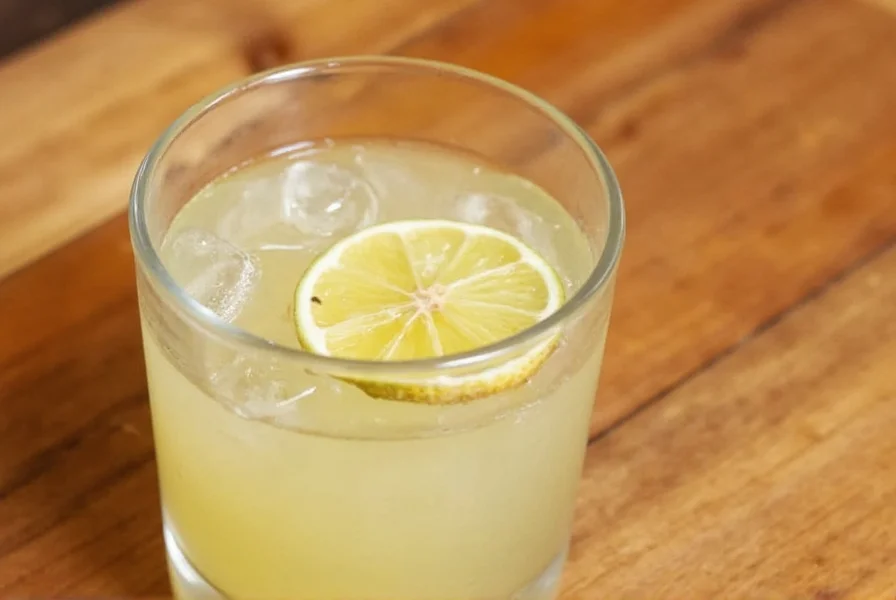Extracting fresh ginger juice at home is simpler than many realize. Whether you're adding it to smoothies, teas, or wellness shots, freshly squeezed ginger juice delivers potent flavor and maximum nutritional benefits compared to store-bought alternatives. This guide covers five practical methods to juice ginger root using tools you likely already have in your kitchen.
Why Fresh Ginger Juice Matters
Ginger root contains gingerol, the bioactive compound responsible for its distinctive flavor and health properties. Freshly extracted juice preserves more of these beneficial compounds than dried or processed alternatives. When you juice ginger at home, you control the quality, avoid preservatives, and get the full spectrum of ginger's natural enzymes and nutrients.
Five Effective Methods to Juice Ginger Root
Depending on your available tools, you can choose from these proven techniques:
1. Grater and Strainer Method (Most Accessible)
This approach works with basic kitchen tools and delivers excellent results:
- Peel the ginger root using a spoon (easier than a peeler for knobby ginger)
- Grate the ginger on the finest holes of your box grater
- Transfer the grated ginger to a cheesecloth, nut milk bag, or fine mesh strainer
- Squeeze firmly to extract every drop of juice

This method typically yields 1-2 tablespoons of juice from a standard 2-inch piece of ginger root. The fine grating breaks down fibers effectively, maximizing extraction.
2. High-Speed Blender Method
When you need larger quantities of ginger juice:
- Peel and roughly chop 2-3 inches of ginger root
- Add to blender with ¼ cup water to facilitate blending
- Blend on high speed for 45-60 seconds until completely smooth
- Strain through cheesecloth, squeezing to extract all liquid
This technique works well for juicing multiple ingredients together, such as when making immunity shots with ginger, lemon, and turmeric.
3. Citrus Press Method
If you have a handheld citrus press:
- Peel and cut ginger into small pieces that fit your press
- Place pieces in the press chamber
- Squeeze firmly to extract juice
This method works best with younger, more tender ginger roots. Mature, fibrous ginger may not yield well with this technique.
4. Garlic Press Method
For small quantities of ginger juice:
- Peel and cut ginger into pieces that fit your garlic press
- Place in the press chamber
- Squeeze firmly to extract juice directly into your recipe

This approach is ideal for adding fresh ginger directly to sauces, dressings, or small-batch recipes where precision matters.
5. Electric Juicer Method
For frequent juicing needs:
- Peel the ginger root (optional for masticating juicers)
- Cut into pieces that fit your juicer's feed chute
- Process through juicer according to manufacturer instructions
Centrifugal juicers work faster but may yield slightly less juice than masticating (cold press) juicers, which extract more efficiently from fibrous roots like ginger.
Comparison of Ginger Juicing Methods
| Method | Time Required | Yield Efficiency | Best For |
|---|---|---|---|
| Grater & Strainer | 5-7 minutes | High (85-90%) | Most home kitchens, small batches |
| Blender & Strainer | 8-10 minutes | Medium-High (80-85%) | Larger batches, multiple ingredients |
| Citrus Press | 3-5 minutes | Medium (65-75%) | Tender ginger, quick small amounts |
| Garlic Press | 2-4 minutes | Low-Medium (60-70%) | Very small quantities, direct recipe use |
| Electric Juicer | 3-5 minutes | High (80-90%) | Frequent juicing, larger quantities |
Maximizing Your Ginger Juice Yield
Follow these professional tips to get the most from your ginger root:
- Select quality ginger: Choose firm, smooth roots with tight skin and minimal wrinkles
- Refrigerate before juicing: Cold ginger is easier to peel and yields slightly more juice
- Don't skip the straining step: Proper squeezing through fine mesh or cheesecloth extracts significantly more liquid
- Use the pulp: Save leftover ginger pulp for stir-fries, baked goods, or compost
- Freeze excess juice: Pour into ice cube trays for convenient portioning
How Much Juice to Expect
Yield varies based on ginger maturity and method, but generally:
- 1-inch piece of ginger: approximately ½ tablespoon juice
- 2-inch piece of ginger: 1-2 tablespoons juice
- 4-inch piece of ginger: 3-4 tablespoons juice
Mature, fibrous ginger yields less juice than younger, juicier roots. For wellness shots, a standard serving is ½-1 tablespoon of fresh ginger juice.
Storing Fresh Ginger Juice
To maintain maximum freshness and potency:
- Store in an airtight glass container in the refrigerator
- Press a piece of plastic wrap directly onto the juice surface to minimize oxidation
- Use within 3-5 days for best quality
- For longer storage, freeze in ice cube trays then transfer to freezer bags
Adding a small amount of lemon juice (1 teaspoon per ¼ cup ginger juice) can help preserve color and freshness.
Creative Ways to Use Fresh Ginger Juice
Don't limit yourself to basic ginger shots. Try these applications:
- Add to morning smoothies for digestive benefits
- Mix with honey and lemon for a soothing throat remedy
- Whisk into salad dressings for vibrant flavor
- Stir into hot water with lemon for a revitalizing tea
- Blend with turmeric and black pepper for enhanced absorption
Frequently Asked Questions
Do I need to peel ginger before juicing?
Peeling is recommended for most methods as the skin can impart a slightly bitter taste and contains more fiber that reduces juice yield. However, with masticating juicers, you can often juice unpeeled ginger if thoroughly washed. For grating or pressing methods, peeling significantly improves juice quality and extraction.
How can I juice ginger without a juicer or special tools?
The most effective method for juicing ginger without specialized equipment is the grater and cheesecloth technique. Simply peel the ginger, grate it finely on the smallest holes of your box grater, then gather the pulp in cheesecloth or a clean kitchen towel and squeeze vigorously to extract the juice. A garlic press also works well for small quantities when other tools aren't available.
Why isn't my ginger yielding much juice?
Several factors affect ginger juice yield: older, drier ginger roots contain less moisture; improper preparation (not grating finely enough); insufficient squeezing pressure; or using methods not optimized for fibrous roots. For maximum yield, select plump, firm ginger, grate it very finely, and apply firm, consistent pressure when squeezing. Refrigerating ginger before juicing can also improve yield slightly.
Can I substitute ground ginger for fresh ginger juice?
Ground ginger cannot be substituted directly for fresh ginger juice as they have different flavor profiles, potency, and liquid content. As a general guideline, ¼ teaspoon of ground ginger equals approximately 1 tablespoon of fresh ginger juice, but the fresh juice provides brighter flavor and more active compounds. For recipes specifically calling for ginger juice, fresh preparation yields superior results.
How long does fresh ginger juice last in the refrigerator?
Properly stored fresh ginger juice remains potent for 3-5 days in the refrigerator. To maximize freshness, store in an airtight glass container with plastic wrap pressed directly onto the juice surface to minimize oxidation. For longer storage, freeze the juice in ice cube trays then transfer the cubes to freezer bags, where it will maintain quality for 3-6 months.











 浙公网安备
33010002000092号
浙公网安备
33010002000092号 浙B2-20120091-4
浙B2-20120091-4